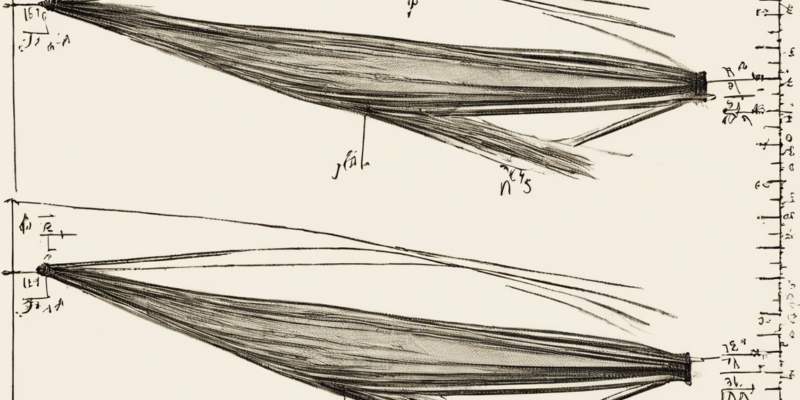If you toss a projectile in the air, it will follow a certain path determined by its initial velocity and the force of gravity acting upon it. In this case, let’s consider a projectile with an initial velocity vector of [ \vec{V_0} = V_{0x}\hat{i} + V_{0y}\hat{j} ], where [ V_{0x} = I ] and [ V_{0y} = 2J ].
Understanding Projectile Motion
When a projectile is launched into the air at an angle or vertically, two main components affect its motion: the horizontal and vertical components. The horizontal component remains constant, while the vertical component is influenced by the force of gravity.
Resolving the Initial Velocity
Before we delve deeper into the motion of the projectile, let’s resolve the initial velocity vector into its horizontal and vertical components.
Given:
– [ V_{0x} = I ]
– [ V_{0y} = 2J ]
The horizontal component of the initial velocity, [ V_{0x} ], is I, and the vertical component, [ V_{0y} ], is 2J.
Equations of Motion
The motion of a projectile can be analyzed using the following equations of motion:
-
Horizontal motion: The horizontal velocity remains constant throughout the motion of the projectile, as there is no horizontal acceleration (neglecting air resistance). The horizontal distance traveled by the projectile can be calculated using the equation [ x = V_{0x} \times t ], where x is the horizontal distance, [ V_{0x} ] is the initial horizontal velocity, and t is the time elapsed.
-
Vertical motion: The vertical velocity of the projectile changes due to the acceleration caused by gravity. The vertical position of the projectile at any given time can be calculated using the equation [ y = V_{0y} \times t – \frac{1}{2}gt^2 ], where y is the vertical distance, [ V_{0y} ] is the initial vertical velocity, g is the acceleration due to gravity (typically 10 m/s^2), and t is the time elapsed.
Trajectory of the Projectile
Combining the horizontal and vertical motions, the trajectory of the projectile follows a curved path known as a parabola. The shape of the parabolic trajectory is determined by the initial velocity and the angle of projection.
Maximum Height and Range
The maximum height reached by the projectile can be calculated using the formula [ H = \left( \frac{{V_{0y}}^2}{{2g}} \right) ], where H is the maximum height. The horizontal range, which is the horizontal distance traveled by the projectile before hitting the ground, can be calculated using [ R = \frac{{V_{0x}}^2}{g} ].
Key Takeaways
- Projectile motion is the motion of an object through the air that is subject to only the acceleration of gravity.
- The path of a projectile is a parabola due to the combined effects of horizontal and vertical motion.
- Horizontal velocity is constant, while vertical velocity changes due to the influence of gravity.
Frequently Asked Questions (FAQs)
1. What is the angle of projection for the given initial velocity?
Given that the initial velocity vector is [ \vec{V_0} = I\hat{i} + 2J\hat{j} ], the angle of projection can be calculated using [ \theta = \arctan \left(\frac{V_{0y}}{V_{0x}}\right) ].
2. How does air resistance affect projectile motion?
Air resistance can alter the trajectory of a projectile by acting in the opposite direction to the motion, slowing it down. In real-life scenarios, air resistance can cause deviations from the ideal projectile motion.
3. What is the formula for time of flight of a projectile?
The time of flight, which is the total time the projectile remains in the air, can be calculated using the formula [ T = \frac{2V_{0y}}{g} ].
4. How can we calculate the final velocity of the projectile at any given point?
The final velocity of the projectile can be calculated by combining the horizontal and vertical components using [ V_f = \sqrt{{V_{fx}}^2 + {V_{fy}}^2} ].
5. Can we launch a projectile at an angle other than 0 degrees or 90 degrees?
Yes, a projectile can be launched at any angle between 0 and 90 degrees to the horizontal. The angle of projection affects the range and maximum height of the projectile.
6. How does increasing the initial velocity impact the trajectory of the projectile?
Increasing the initial velocity of the projectile results in a higher maximum height and a longer range. The projectile covers more distance both horizontally and vertically.
7. What factors can affect the motion of a projectile?
Factors such as air resistance, wind speed, and the shape of the projectile can influence its motion. In a vacuum with ideal conditions, a projectile follows a simple parabolic trajectory.
8. Is the motion of a horizontally launched projectile different from a vertically launched one?
Yes, the motion of a horizontally launched projectile differs from that of a vertically launched one. A horizontally launched projectile has no initial vertical velocity, while a vertically launched projectile has no initial horizontal velocity.
9. How can we calculate the velocity of the projectile at a given height?
The velocity of the projectile at any height can be calculated using the equations of motion and considering the effects of gravity on the vertical component of velocity.
10. Can the range of a projectile be negative?
No, the range of a projectile cannot be negative. The range is the horizontal distance traveled by the projectile and is always a positive value.


Comments